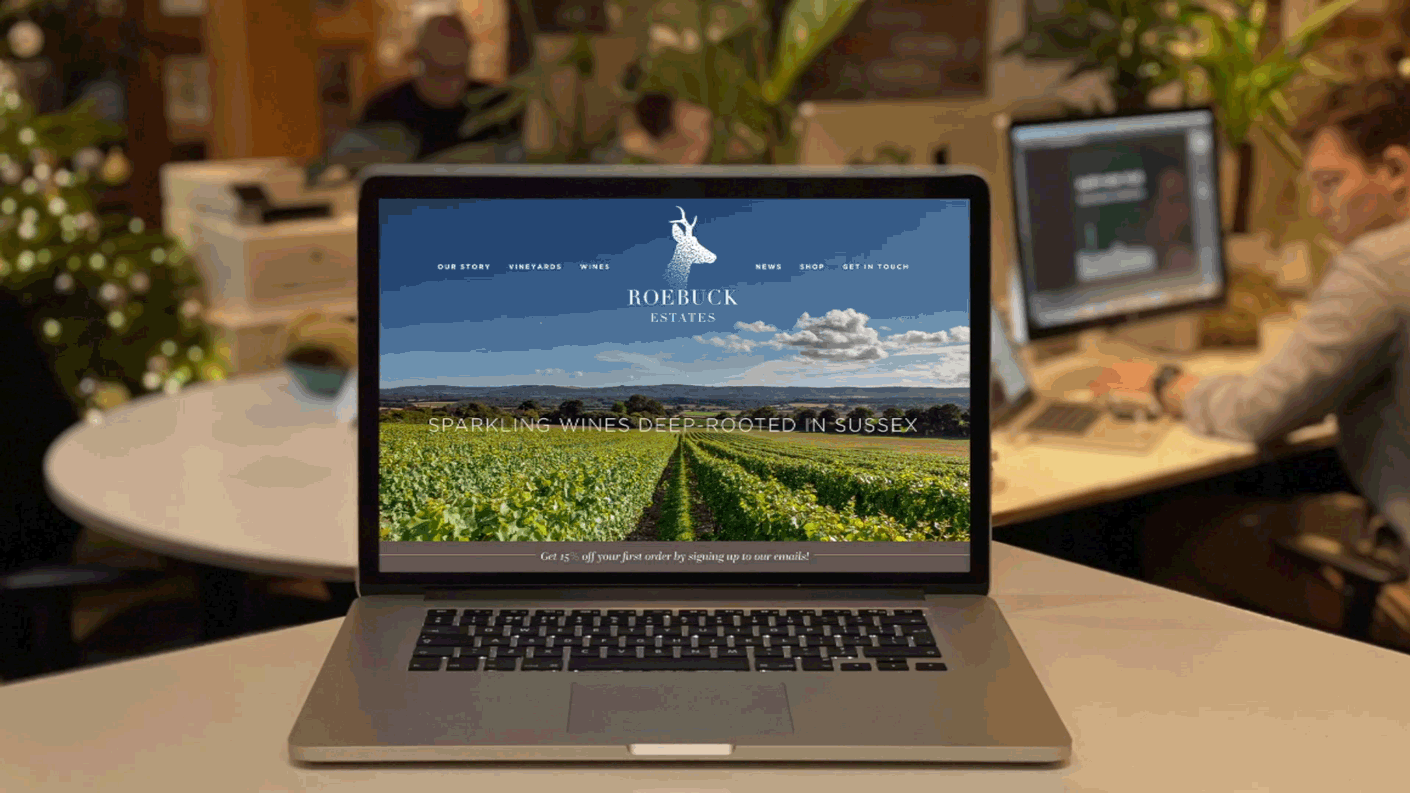Nowadays, a customer’s first encounter with your brand is almost definitely online, on your website – the ultimate vehicle to showcase your brand and grow customer loyalty, away from the noise of competitors. You want it to be a showstopper that delivers a great UX (user experience), and, really, there’s no reason it can’t be. However, even the best have expiry dates.
On average, a good website has a shelf life of around 4 years – and we’ve found that a great web design can last even longer. But the minute your user journey is anything less than seamless, it’s probably time for a reboot. Why? Because 80% of customers view the experience you deliver as being as important as the product you sell, and 75% evaluate credibility by assessing your website design alone.
We know: a new website is a big commitment, but boy does it pay off in terms of brand development and sales.
In this piece, we won’t be talking about website searchability or promotion – two other digital marketing fundamentals. We’ll simply define what makes for a great UX and highlight why your website might benefit from a shiny new revamp.
Checklist at the ready? Brilliant. Here are 5 signs your UX may need improving…
1. Your website isn’t responsive
A rather short-tempered customer walks into a restaurant. If they’re not almost instantly seated and provided with a clearly laid out menu, they leave. If the restaurant and menu don’t look great – or the menu’s in a format that makes reading difficult, they leave. If service is sluggish, they leave – no second chances.

When it comes to websites, this less-than-forgiving approach applies to almost every visitor. It’s not a one-off. 93% will leave a site if it doesn’t display correctly on their device, and 10% will depart for every second a page takes when loading.
The most important aspect of any user experience is that it is responsive.
Why? Well…
In 2012, only 10.74% of web traffic was mobile.
In 2020 it was 51.61%.
In 2021 it’s 55.56%.
A huge proportion of your customers will be visiting your website via their mobile devices – and if they have a negative mobile experience, they’re 62% less likely to spend with your brand in the future. Many business owners spend minimal time assessing their site’s mobile UX, as office hours tend to equal desktop rather than mobile browsing. Things fall through the cracks.
So, to meet modern UX standards, your website needs to look and feel great, whatever device it’s accessed from, and an older website design is unlikely to allow for this.
2. Your website looks old
You have around 50 milliseconds to make a good impression when visitors land on your site, and 90% will ditch a website due to a poor design – that’s a big piece of the pie.
If your website’s several years old, it likely looks it – unfashionable fonts, overcrowded pages, static menus, you get the gist. Something retro from a bygone era.

Today’s users are used to sleek, polished layouts and over half will spend fewer than 15 seconds skimming your site for the information they want. The longer a visitor hangs around, the better the impression you’re making, and design plays a pivotal role in steering this.
Great UX design paired with great copy is what gets people past the homepage, exploring your content, and responding positively to CTAs, increasing your chances of engagement and conversion.
A polished new website design can also help build a sense of credibility around your brand – a clunky, dated design looks outmoded and, at worst, bargain-basement: not a recipe for instilling trust in customers.
If a competitor has invested in a new website that looks fresh and modern next to yours, customers will naturally opt to use them instead – new talent is less likely come on board, too. To remain competitive, your website needs to sell you as a business to watch, not a relic of the past.
3. Your UX isn’t converting
High traffic means little if it’s matched by a high bounce rate, low browsing time, and a low conversion rate.
If your website journey fails to persuade a reasonable chunk of visitors to use your product or service, it may be time for a new website design. This allows you to go back to the drawing board and remap your journey to focus on target customer segments and fulfil clearly defined objectives.
Website navigation needs to be easy and intuitive, not long and confusing. People should be able to find relevant content with ease, and calls to action should be simple to integrate on pages.

Likewise, your website journey should also act as a crucial cog in a joined-up marketing strategy: Google Adwords and social media campaigns should link to attractive, functional landing pages on a website that delivers a smooth experience – otherwise, there’s little point in spending on digital marketing.
4. Your website is inconsistent with your brand
Perhaps your business has grown, your brand positioning has shifted, or you’ve totally rebranded, and you’re targeting a new audience. Maybe your business has merged with another. Either way, your digital assets need to accurately and evenly reflect your business as it stands, from your social media presence to your website.

Inconsistent brand application will only alienate your customer segments and dilute your messaging. If your brand has undergone significant change, you likely need a new website design that does your visual identity justice and facilitates relevant user journeys.
5. Your CMS is outmoded
A great Content Management System (CMS) can gather valuable customer data, from which you can draw out and apply insights to improve user experience.
It will also be highly responsive, enabling you to create and release excellent content with ease. Adding new users should be straightforward, allowing for efficient content management within your team.
A clunky CMS will guzzle time and money: the addition of new content is likely to call for more complex processes, and you may find yourself dependent on the services of an IT expert or trained team member for each update.
Why invest in improving your UX?
The reality is that we live in a search-first, try-second world. The bulk of your customers will judge you on your website, the most accessible, most accessed representation of your brand.
They say you are what you eat. When it comes to brand credibility, you are your UX – so make sure it’s a corker.
